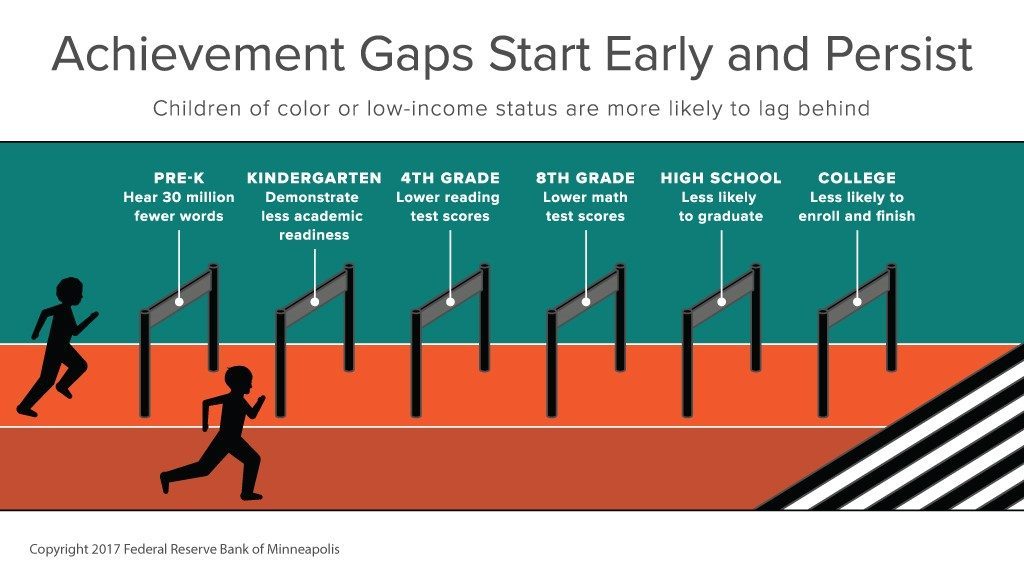The Problem: Educational Access for FGLI Inner City Youth
First-gen low-income youth, especially the daughters and sons of immigrants, have little knowledge of the educational system yet know the power that it can have in changing one’s life. Middle schoolers that show promise may either continue on the path of educational success or fall victim to underfunded schools, lack of guidance in high school/ college admissions process, or teachers who do not understand their identities and the complex problems that come with it. For a lot of these students, they are the only ones who speak English in the household and play a huge role in their family life. If they continue on the path that most students do in their neighborhoods they will likely struggle through highschool balancing multiple responsibilities both scholarly and familial. Depending on the school they go to they will either have a negative or positive perception of their future in academia. Options like college, study abroad, or grad school will seem either possible or impossible given the amount of support they receive along the way, either from a program or their institution. In metropolitan areas like New York City and Newark, NJ non-profits try to provide a means of support but only to a select few who show promise. This support that can begin as early as in middle school will set these students on a different path of education that may lead them to the doorstep of an Ivy League school and a taste of social mobility. I call these programs Accelerated Educational Access Programs.
The Problem Filled Solution: AEAPs
What are they?
Accelerated Educational Access Programs are programs that are usually run by non-profits that aim to find high achieving low-income students of color in the hopes of putting them on the path of upward mobility through education. These programs recruit middle schoolers because they believe it is a key time where a student’s educational path may be influenced
What do they do?
Teachers, administrators, and even parents may nominate students who show potential in their schools to succeed in these AEAPs. These programs advertise the opportunity for better education, growth, and new experiences for those who make the commitment through their arduous process.
How do they do it?
AEAPs provide supplementary academic support in the form of summer class sessions and sessions throughout the year either on some weekdays or Saturdays. During these sessions, students are split into groups where they are led by an advisor who is either in college or high school. Most programs will recruit from their alumni base to come back and work them throughout the year or summer. In these groups, students will take a variety of classes throughout the day, eat meals with each other, and participate in recreational or team building activities. The goal is to establish independence, teamwork, communication, and a good work ethic in these students. For however long the duration of the program is the students will repeat these sessions until they begin to talk about admissions processes to different educational institutions. For most programs, the goal is to get their students ready to admissions into competitive independent day schools, boarding schools, or elite private schools. These programs are tuition-free because they are for low-income families and run by donations from large parent organizations, alumni, or parents. All is asked of students is to maintain high grades and behave themselves in school and the program. If they seem to trail behind in one of those departments they are at risk of being kicked out. These programs are not for everyone and vice versa.
Pros and Cons
AEAPs give their participants the opportunity of a lifetime at a cost of leaving one’s community and having their identity challenged. When preparing for admissions into institutions of hyper wealth and hyper whiteness students are not adequately aware of the culture shock they may experience or the struggles with their own identity in these places with monolithic cultures. In most cases, it is up to the student and their emotional maturity, and self-awareness to decide whether they will assimilate into the culture, or completely reject it. The aspect of leaving one’s community to pursue a better educational opportunity also weighs on these students because they feel as if they are abandoning the ones who need them the most back home. However, for most of these students who go through these AEAPs and onto their high schools and onto colleges, they recognize the program’s importance in putting them on their path of success. For many of them, they believe they wouldn’t be in their current situations without the intervention of their AEAP, and I am one of them. WIthout the AEAP that I attended my life would be on a different path and I would not have been exposed to the resources that lead me to succeed despite so many odds. I am grateful for the skills my program taught me, the lessons I learned, the friends I gained but I am also very critical of its role in preparing me for the realities of society outside my neighborhood. While the program could have done more to prepare me socially, and culturally for the school I would later matriculate to, they could have also been more honest with what I was going to get myself into. To create a conscious path of upward mobility through education programs must be transparent of the institutions they are preparing their participants for but also more supportive once they get there as well.
